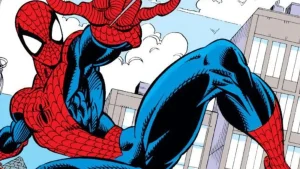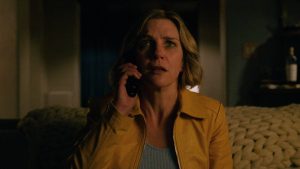TV show spin-offs of movies often work surprisingly well, e.g. Ash vs. Evil Dead, Fargo, Bates Motel, Buffy the Vampire Slayer (though the film’s events are not canon in the show), Chucky, and Cobra Kai. But, just as frequently, the practice results in stuff like The Continental: From the World of John Wick, Limitless, Minority Report, and My Big Fat Greek Life. FX’s What We Do in the Shadows, which ran on the network from 2019 to 2024, fell firmly in the former category. Based on Jemaine Clement and Taika Waititi’s 2014 film of the same name, it consistently expanded that mockumentary’s horror-coated but hilarious world.
With diverse and compelling characters, plotlines that gave the show good reason to exist, and phenomenal performances by Harvey Guillén, Natasia Demetriou, Matt Berry, Kayvan Novak, Mark Proksch, and Doug Jones, it’s a show that never had a truly rotten season. That said, of the six, some are undoubtedly better than others.
When it was announced that What We Do in the Shadows would be ending with its sixth season, fans were both sad to see it end and somewhat grateful that it was a show going out on its own terms. Had it overstayed its welcome, it could have diminished the impact of its earlier years. Unfortunately, Season 6 still feels like the show overstayed its welcome a bit.
To be fair, it must have been incredibly difficult to figure out how best to end a show about eternal beings, and it makes sense to focus so much on Guillermo, but really all the season has to say is that Guillermo moves away from being a familiar/bodyguard and towards being a corporate drone only to find out the two lives aren’t so different. It’s a fine enough point, but it’s obvious that’s what they’re going for as soon as we’re introduced to Cannon Capital Strategies. Furthermore, the season’s way of forcing Nadja and Nandor into Guillermo’s new job just doesn’t play as smoothly as one might hope. The result is a season that is rarely funny and even less frequently feels like a necessary extension of the overall story. Season 6 is What We Do in the Shadows‘ weakest year by a country mile, even if it hovers a notch or two above being poor television.
When it comes to major running plotlines, Season 4 has the greatest disparity in terms of quality. Just as with Season 3 (more on that in a second), the Laszlo-Colin Robinson plot is great here. For the most part, What We Do in the Shadows‘ vampiric characters are individuals who change slightly but end up returning to who they were in Season 1. But, here, we see Laszlo become a father figure, and we know it’s changed him, even if his progeny (a reincarnated Colin Robinson) almost immediately forgets all their time together.
Nadja’s opening of a vampire nightclub, however, consistently falls flat. It’s there to show she has ambition and wants to grow, but that was already done with the previous season’s Vampiric Council thread. Falling somewhere towards the middle is Nandor’s finding of a Djinn lamp, and that mostly works not in a narrative sense but rather because Anoop Desai’s put-upon line readings are so hysterical.
The good thing about Season 3 is its middle few episodes are quite strong. That’s not to say any of it is particularly poor, but early season episodes like “The Cloak of Duplication” and “Gail” rely a bit too much on either cringe humor or one-joke premises. But episodes five through eight, “The Chamber of Judgement,” “The Escape,” “The Siren,” and “The Wellness Center,” are all winners (the moment in “The Chamber of Judgement” when Derek, now a vampire, explains away his crimes with a “Whoops” is amazing).
Like with Season 4, Season 2 has several major running thread plotlines, and of the two biggest, one works better than the other. The stronger of the two is Laszlo and Colin Robinson’s bonding, and the season does a really great job of dropping the latter’s impending death on the audience (though, of course, Colin Robinson would return). On the lesser end, Nandor and Nadja’s running of the Vampiric Council kind of comes and goes. However, the Season 4 plotline it led into, Nadja’s nightclub, was worse.
After the quality drops that were the third and fourth seasons, Season 5 righted the ship in a major way. Guillermo trying to hide the fact that he had Derek turn him into a vampire at the end of Season 4? Great. Guillermo struggling to actually become a vampire? Even better. Laszlo’s teaming with Guillermo to find out what is hindering his vampiric transformation? A top-tier throughline story.
What really helps Season 5 feel like a return to the good old days, though, is how each episode feels independent from one another, even with the whole Guillermo is a vampire plotline. Then there’s “Pride Parade,” which is one of those episodes that gives the vampires’ neighbor, Sean, a real chance to shine, and that was never anything short of hilarious. Lastly, this was the season where Kristen Schaal’s the Guide was able to come into her own and stand as a perfect addition to the whole ensemble.
Seasons one and two of What We Do in the Shadows have the faintest throughline plots of the series, and they’re the strongest seasons, so perhaps there’s something to be said for that. With Season 1 it’s just the Baron’s arrival, which makes Laszlo, Nadja, and Nandor feel as though they may very well die if they don’t carry out his plan to conquer North America. Then that shifts midway through the season to them being thought responsible for the Baron’s death (which was Guillermo’s fault, purely by accident, and the Baron is revealed down the line to not even be dead anyway). What Season 1 operates as more than any delivery of an overarching plotline is just an opportunity for the audience to feel like they’re living a day in the life of three vampires, an energy vampire, and a familiar. And from the pilot to “City Council,” “Werewolf Feud,” “Animal Control,” and “The Orgy” there really isn’t a single dud in the bunch. It took a surprisingly slim amount of time for the cast to become clearly comfortable in their roles (about two episodes) and it takes even less time for us to fall in love with them.
Not to mention, most of the show’s best recurring jokes, protagonist details, and several of its lovable side characters started right here, including Laszlo’s yelling of “Bat!,” the way Colin Robinson feeds, the ultra-gullible neighbor Sean, and Guillermo’s secret lineage. All of these things were unique to the show, and signifiers that it could run where the movie had walked. But perhaps the ultimate sign of the show’s brilliance, even from its earliest days, was the aforementioned mid-season shift. After Episode 6, “Baron’s Night Out,” which may be the funniest episode of the show as a whole, we’re taken to “The Trial.” This episode undoubtedly feels like a finale. The stakes are high (as high as they got in Season 1 of this show, anyway), Tilda Swinton’s there, it feels like a culmination. But there are still three episodes to go. It just all works and, if there’s an imminently rewatchable season, it’s this one.
Season 2 still has the relaxed, day in the life vibe of Season 1 but incorporates even stronger writing, even more importantly, it starts to expand Guillermo as a character. Having him accidentally learn of his Van Helsing origins was an interesting tag on Season 1, and watching him grapple with the dichotomy of that and his desire to be a vampire is a great throughline plot.
Admittedly, the whole Guillermo joins a crew of vampire hunters thing doesn’t really fly, but it also only lasts two episodes. For the most part, Season 2 is just a highly effective batch of episodes, with the show and its cast feeling fully comfortable in their roles. And, if Season 1’s “Baron’s Night Out” isn’t the funniest episode of the whole show, Season 2’s “Brain Scramblies” is.
The post Every Season of What We Do in the Shadows, Ranked appeared first on ComicBook.com.




